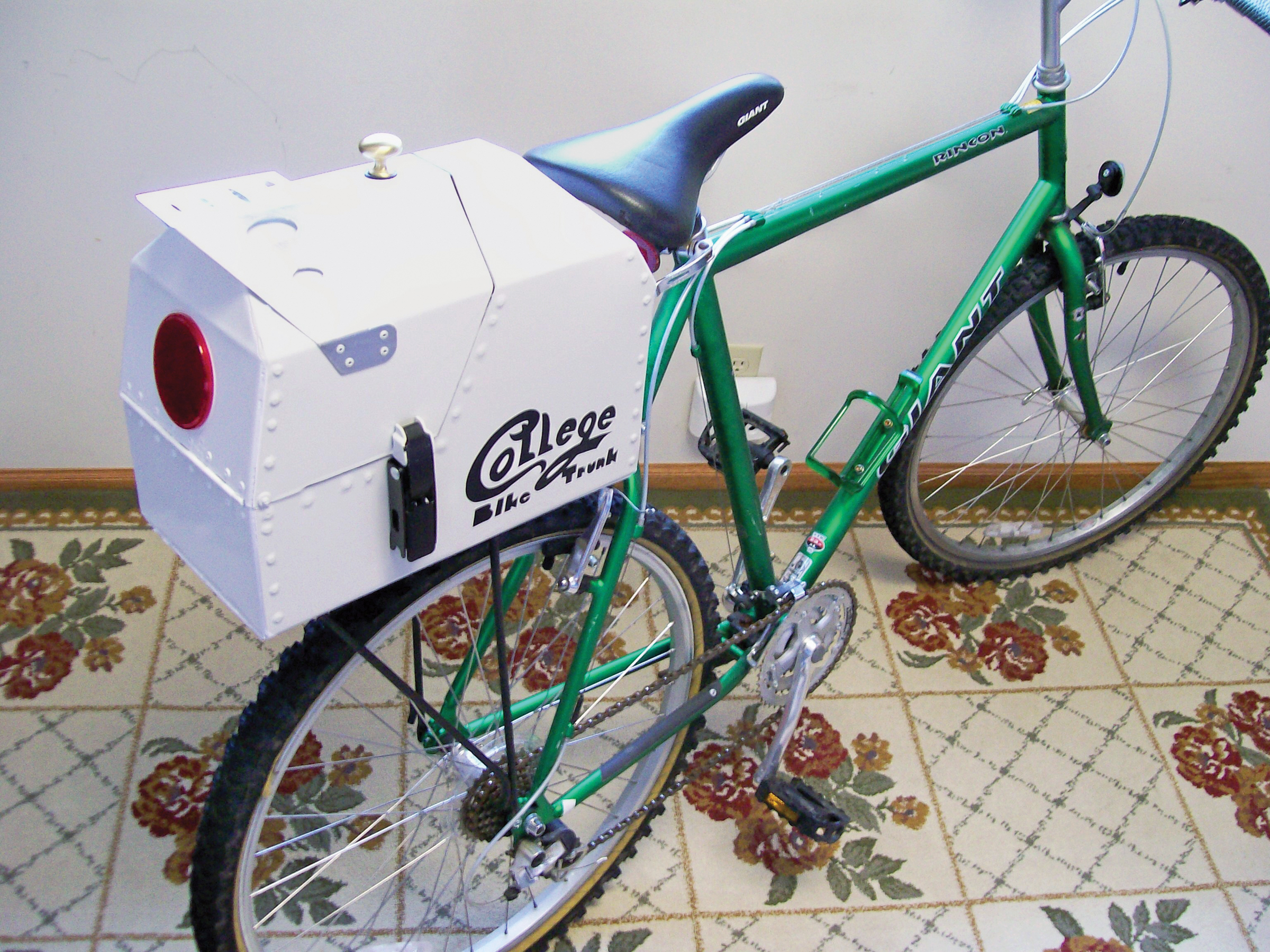Growing up, I would often visit my grandparents in Dinkytown, the southeast Minneapolis neighborhood near the University of Minnesota that was named after the freshman cap worn there a century ago. I remember seeing students on ten-speeds carrying their stuff in milk crates that they strapped to the rear rack with bungee cords.
Inspired by that image, I wanted something better and more secure. Car drivers can lock things up while running errands, so why should cyclists have to carry everything around with them?
So I designed this sheet metal bike trunk. I sized it to hold two 1-gallon jugs of milk with a little room to spare. Its top angles away from the seat like a saddle does, so nothing rubs against the rider. And its 2 latches will accept 2 padlocks to secure the contents against casual theft.
NOTE: If you like, you can prototype the project in cardboard before going to metal. For more advice on working with sheet metal, see my Retro Racer project (MAKE Volume 11, page 97) and Mister Jalopy’s “Q&D: Holes, Rivets, and Bent Metal” (MAKE Volume 05, page 110).



